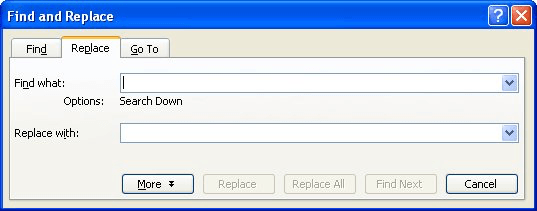Please Note: This article is written for users of the following Microsoft Word versions: 97, 2000, 2002, and 2003. If you are using a later version (Word 2007 or later), this tip may not work for you. For a version of this tip written specifically for later versions of Word, click here: Easily Changing Links in Documents.
Written by Allen Wyatt (last updated February 8, 2020)
This tip applies to Word 97, 2000, 2002, and 2003
John has documents that contain links to pictures on a network drive. The pictures have been moved, and he wants a way to change the links so they point to the new location of the pictures. The only thing that has to change is the drive letter and the path, not the picture name itself.
When you insert pictures as links in your document, they are inserted as INCLUDEPICTURE fields. You can see this if you select the picture and press Shift+F9. You should then, instead of the picture, see a field similar to the following:
{ INCLUDEPICTURE "R:\\CommonPics\\masthead.jpg" \* MERGEFORMAT \d }
With the field code displayed, the contents of that field code can easily be changed using the Find and Replace capabilities of Word. Thus, you can change the drive and path by following these general steps:

Figure 1. The Replace tab of the Find and Replace dialog box.
The links in the document are now all updated, and you can save your document.
If you have quite a few documents that you need to change, you may be interested in implementing the above steps in a macro. Creating the macro is easy (just record the above steps), but getting Word to perform the operation on a series of files, without intervention on your part, is a bit more involved. A good place to start to learn how to do this is at the Word MVP site:
http://wordmvp.com/FAQs/MacrosVBA/BatchFR.htm
Once you learn the technique of how to work with multiple files, you can then modify your single-file macro (the one you recorded) so it will work on more than one file.
WordTips is your source for cost-effective Microsoft Word training. (Microsoft Word is the most popular word processing software in the world.) This tip (5397) applies to Microsoft Word 97, 2000, 2002, and 2003. You can find a version of this tip for the ribbon interface of Word (Word 2007 and later) here: Easily Changing Links in Documents.

Create Custom Apps with VBA! Discover how to extend the capabilities of Office 365 applications with VBA programming. Written in clear terms and understandable language, the book includes systematic tutorials and contains both intermediate and advanced content for experienced VB developers. Designed to be comprehensive, the book addresses not just one Office application, but the entire Office suite. Check out Mastering VBA for Microsoft Office 365 today!
Do you have documents that contain objects? Understanding how Word handles objects and the way they are anchored can make ...
Discover MoreThe resolution at which Word compresses graphics in a document may be bothersome. If it is, your options are very ...
Discover MoreYou want your documents to look as good as they can. If those documents include graphics, then you also need to make sure ...
Discover MoreFREE SERVICE: Get tips like this every week in WordTips, a free productivity newsletter. Enter your address and click "Subscribe."
There are currently no comments for this tip. (Be the first to leave your comment—just use the simple form above!)
Got a version of Word that uses the menu interface (Word 97, Word 2000, Word 2002, or Word 2003)? This site is for you! If you use a later version of Word, visit our WordTips site focusing on the ribbon interface.
Visit the WordTips channel on YouTube
FREE SERVICE: Get tips like this every week in WordTips, a free productivity newsletter. Enter your address and click "Subscribe."
Copyright © 2026 Sharon Parq Associates, Inc.
Comments